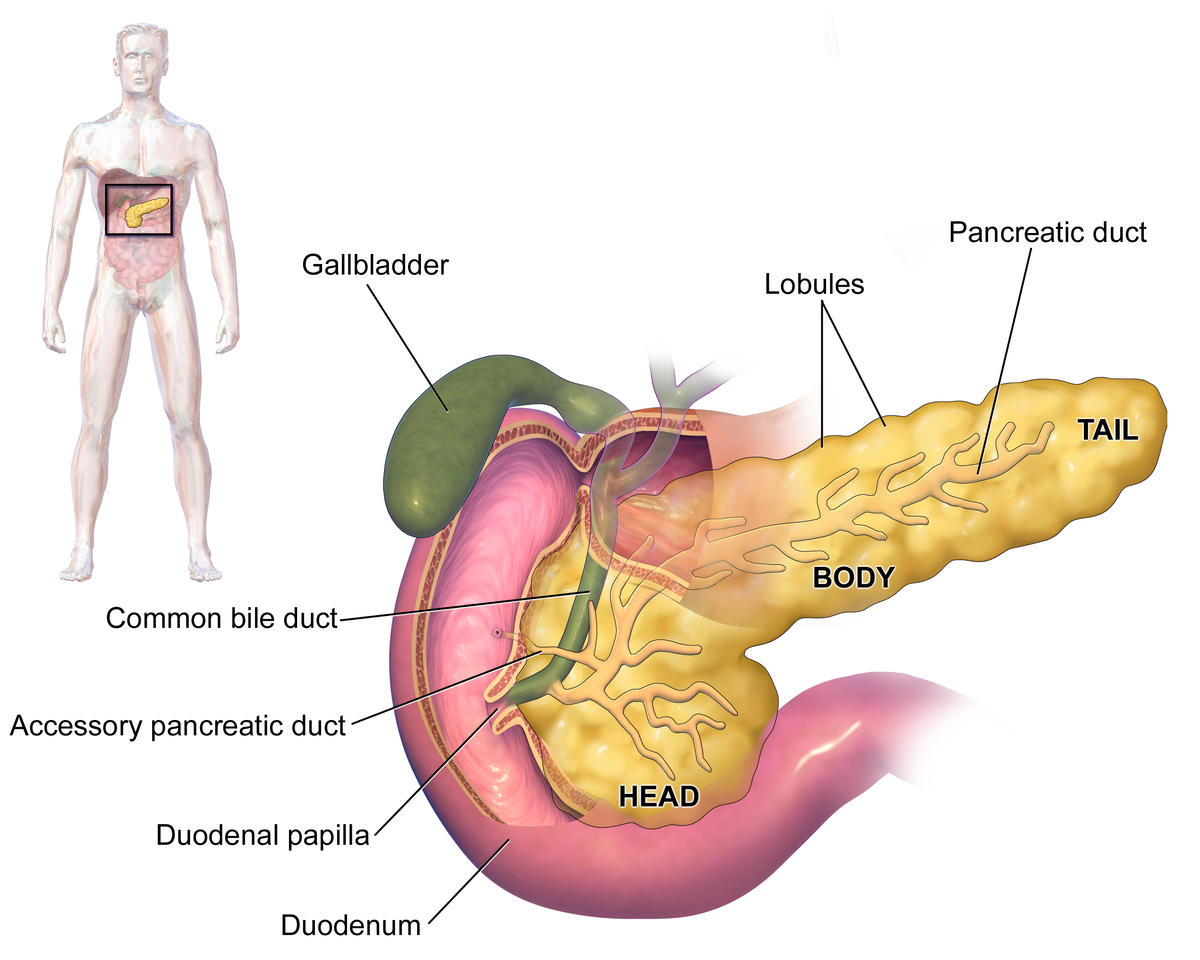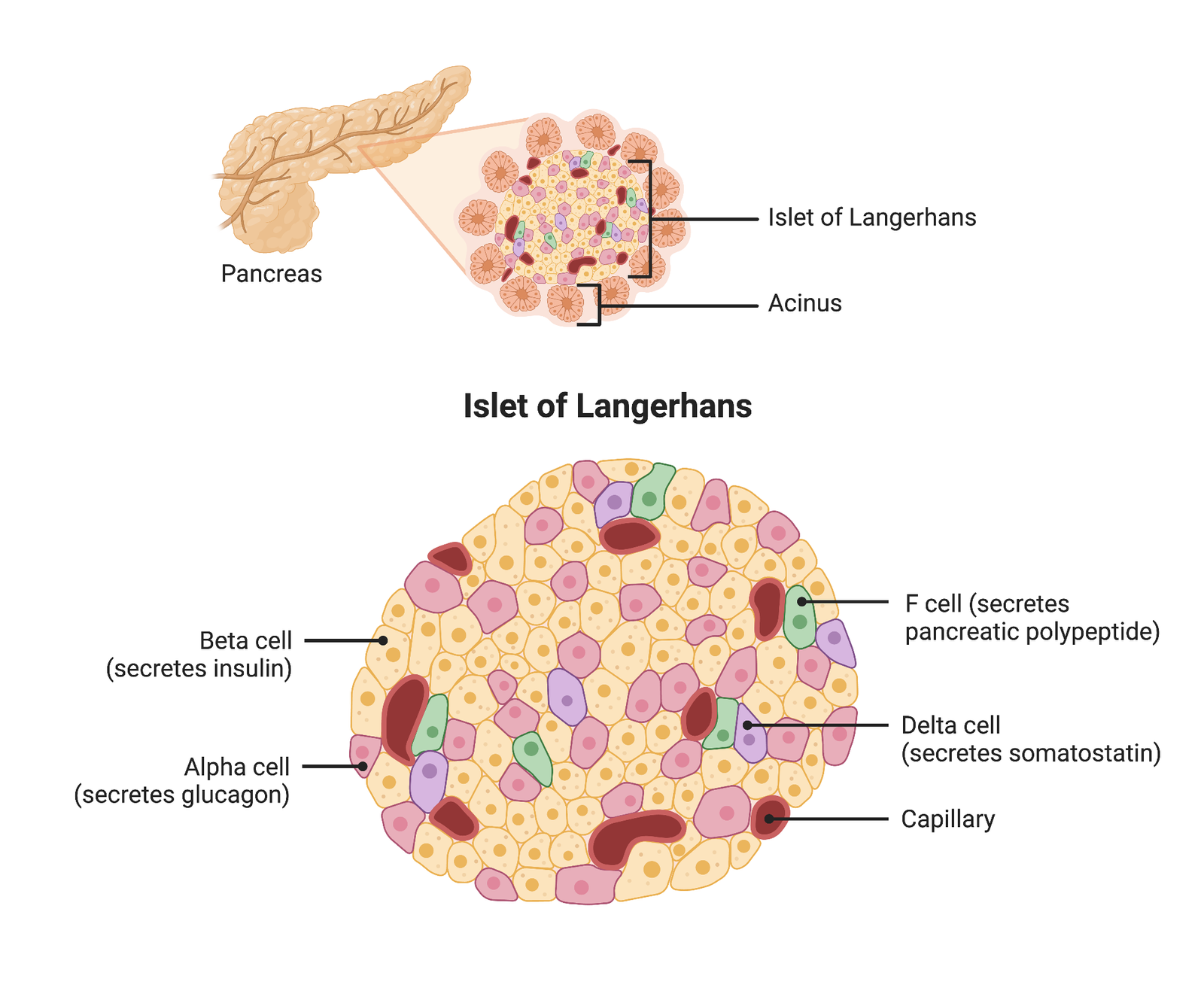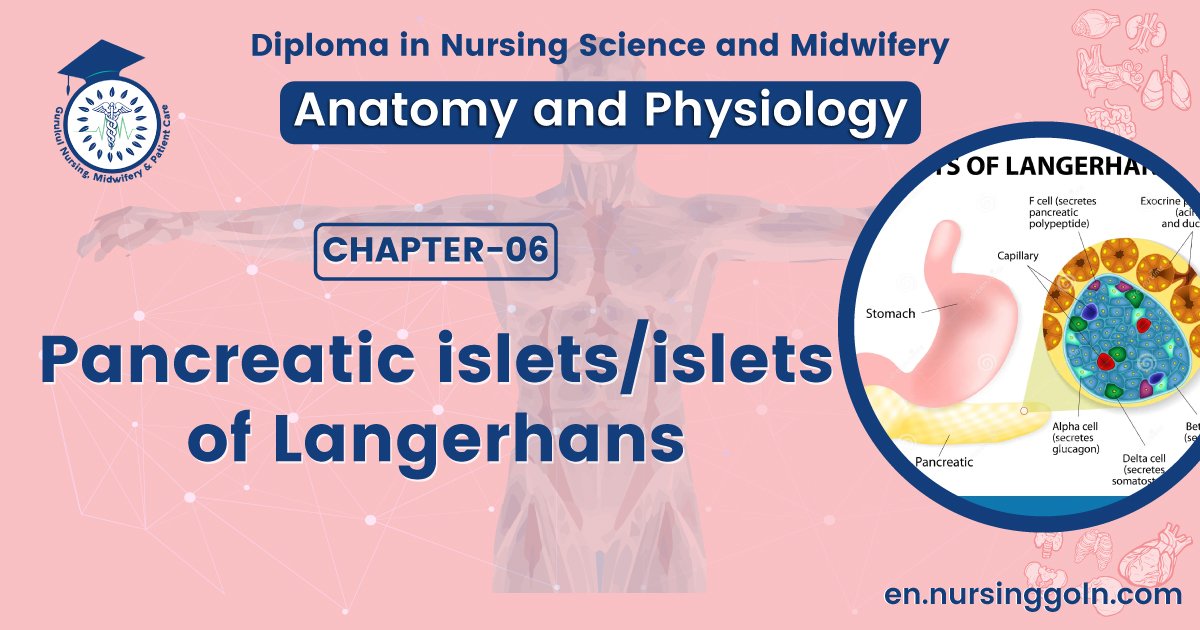Pancreatic islets/islets of Langerhans-The course is designed for the basic understanding of anatomical structures and physiological functions of human body, musculoskeletal system, digestive system, respiratory system; cardiovascular system; urinary system, endocrine system, reproductive system, nervous system, hematologic system, sensory organs, integumentary system, and immune system.The aim of the course is to acquire knowledge and skills regarding anatomy and physiology.
Pancreatic islets/islets of Langerhans

The pancreasis a flattened organ located in the curve of the duodenum, the first part of the small intestine. It has both endocrine functions and exocrine functions. The endocrine part of the pancreas consists of clusters of cells called pancreatic islets or islets ofLangerhans. (See the figure # 6.5)
On a microscopic level, the most prominent or three main type of cells in the islets of Langerhans are…..
- The alpha(a)cells, secrete the hormone glucagon, which increases blood glucose levels. Glucagon sometimes called an “anti-insulin” hormone
- The beta (Bycells, secrete insulin, which reduced blood glucose levels,
- The delta (8)cells, secrete somatostatin, which inhibits the secretion of both insulin and glucagon
(Nice to know: The islets also contain abundant blood capillaries and are surrounded by cells that form the exocrine part of the pancreas. Low blood glucose stimulates secretion of glucagon, and high.) blood glucose stimulates secretion of insulin.)

Actions of pancreatic hormones/Actions of Glucagon and Insulin
1 ) Low blood glucose level (hypoglycemia) stimulates secretion of glucagon.
2) Glucagon acts on liver cells to promote breakdown of glycogen into glucose and formation of glucose from lactic acid and certain amino acids.
3) As a result, the liver releases glucose into the blood more rapidly, and blood glucose level rises
4) If blood glucose continues to rise, high blood glucose level (hyperglycemia) inhibits release of glucagon by alpha cells (negative feedback).
5) At the same time, high blood glucose level stimulates secretion of insulin.
6) Insulin acts on various cells in the body to promote facilitated diffusion of glucose into cells, especially skeletal muscle fibers, to speed synthesis of glycogen from glucose, to increase uptake of amino acids by cells, and to increase protein synthesis.

7) As a result, blood glucose level falls.
8) If blood glucose level drops below normal, low blood glucose inhibits release of insulin by beta cells (negative feedback)
(Ref: Ross & Wilson 9 ed, P225+ J. TORTORA, 8th edition, P-340)
Read more:
